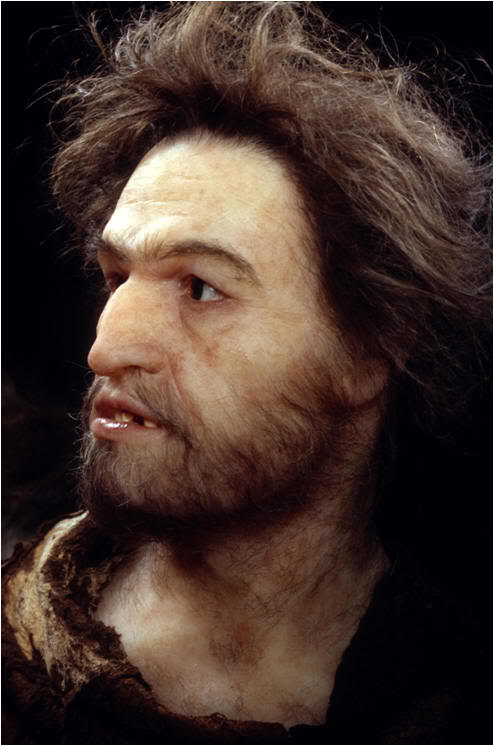Another proof that Kabylia is the cradle of one of the oldest civilizations that has known the history of humanity.
The Afalou man is a Kabyle homo-sapien that resembles the cromanoid of the Upper Paleolithic. He lived in the rock shelter of Afalou Bu R’mel in the region of Bougie / Vgayeth in Kabylia.
The man of Afalou has a high and slender stature, 1.74 for men and 1.63 for women, they have a very robust skeleton, broad shoulders, medium hips, hands and feet are very long.
Fifty bony heads were discovered, 26 heads of women 14 men and 10 of children.
In 1983, CRAPE learned that work on the extension of National Highway No. 43 is about to begin and that threats to the future of the shelters have been put forward and the opportunity presented and seized To constitute the archaeological monograph of the region, and this mission was entrusted to Dr. Slimane Hachi.
Research resulted in the discovery of several bones, including the skeleton of a man 16,000 years BC. As well as stone tools carved in the form of lamellas and pebbles.
This primitive industry, as well as the Kabyle man of Afalou, is characterized by the industry of carved stone, the Iberomaurussian presents itself as the oldest independent civilization which has evolved by itself and whose duration was very great.
The Kabyle man of Afalou seems to be functioning by developing solidarity relationships, as evidenced by the group’s assumption of the disabled woman discovered, so he buried his dead in his dwelling place to the point of forming genuine necropolis.
The characteristic traits of the Cro-Magnon species are recognized in this Middle Palaeolithic man and his main habitat is shelter under rocks and caves.
Nomadism begins to restrict itself and the man of that time (semi-sedentary since H. erectus) prefers to live near the sea or lakes. He still practices fishing, hunting (men) and gathering (women, children and disabled).
The feed is made up of sheep, antelopes, gazelles but also cat and jackal. If the Man of Mechta – Afalou is not an accomplished artist, we have found some ornaments not very sophisticated and for presumed religious use (stones, shells, bones, ostrich feathers).
According to the latest archaeological findings, the men of Mechta – Afalou could survive until the Neolithic. Other research and excavations will not fail to surprise us, given the immensity of the geological and natural niches still unexplored in Algeria.
An opinion: in North Africa, at this time, there was a cold Siberia, which may explain why our ancestors, the first indigenous first of Tamazgha since prehistory, were of the white Mediterranean type.
20,000 years ago our ancestors were better organized and more equal and respectful of life than the muslim Arabs are today
The Departmental Laboratory of Archeology of Val-de-Marne France undertook to reconstruct the face of Afalou Bourmel’s man. The result was staggering. He looks like everyone today’s gentleman

From blog to Dr Caitlin Green:
The distribution of Numidian coins recorded from Britain since the nineteenth century
The aim of the following post is simply to share a distribution map of Numidian coins that have been found in Britain since the nineteenth century. These coins were minted in the ancient North African Kingdom of Numidia and fall into two distinct groups, those issued in the mid-first century BC–early first century AD and those issued during the second century BC.
Although there are relatively few Numidian coins known from Britain compared to many other early non-Roman types—especially Carthaginian issues of the fourth and third centuries BC, which dominate the record of Greek autonomous coins from Britain—there are nonetheless enough to be at least worth noting, and their spatial distribution would appear to be of some interest. On the whole, these North African coins fall into two groups, with the first group representing issues of King Juba I of Numidia (60–46 BC) and his son, Juba II (29 BC–AD 24). Of these, only a single coin of Juba II is recorded in the material surveyed here (from Piercebridge near Darlington), whilst eight of Juba I are reported. In general, these coins of the mid-first century BC–early first century AD have a marked inland, central and eastern distribution within England, although there is a western outlier contained in a somewhat dubious hoard of coins found at Bath in 1806. With regard to when and how these North African coins of Juba I came to be in Britain, it is worth noting that in the 1960s–70s a silver coin of Juba I of Numidia was found ‘stuck’ to a silver unit of the Icenian King Prasutagus (c. AD 50–60). Similarly, a number of the coins recorded on the Portable Antiquities Scheme database were found singly within first-century AD hoards of Roman coins, such as those from ‘North Suffolk’, near Mildenhall, and Sutton (all Suffolk). The latest coins in these hoards date from AD 82–3, AD 79, and probably AD 37 respectively, whilst the report attached to the PAS record of the ‘North Suffolk’ hoard notes that ‘Coins of Juba I are known to have circulated in Britain with Roman denarii, being of similar weight and size’. As such, the Numidian coins of Juba I and Juba II are probably best seen as genuinely ancient imports to Britain, arriving from the Continent with Roman coins either towards the end of the Late Iron Age or in the immediate post-Conquest period.
Read more of the article by following the link…http://www.caitlingreen.org/2015/06/the-distribution-of-numidian-coins.html?m=1